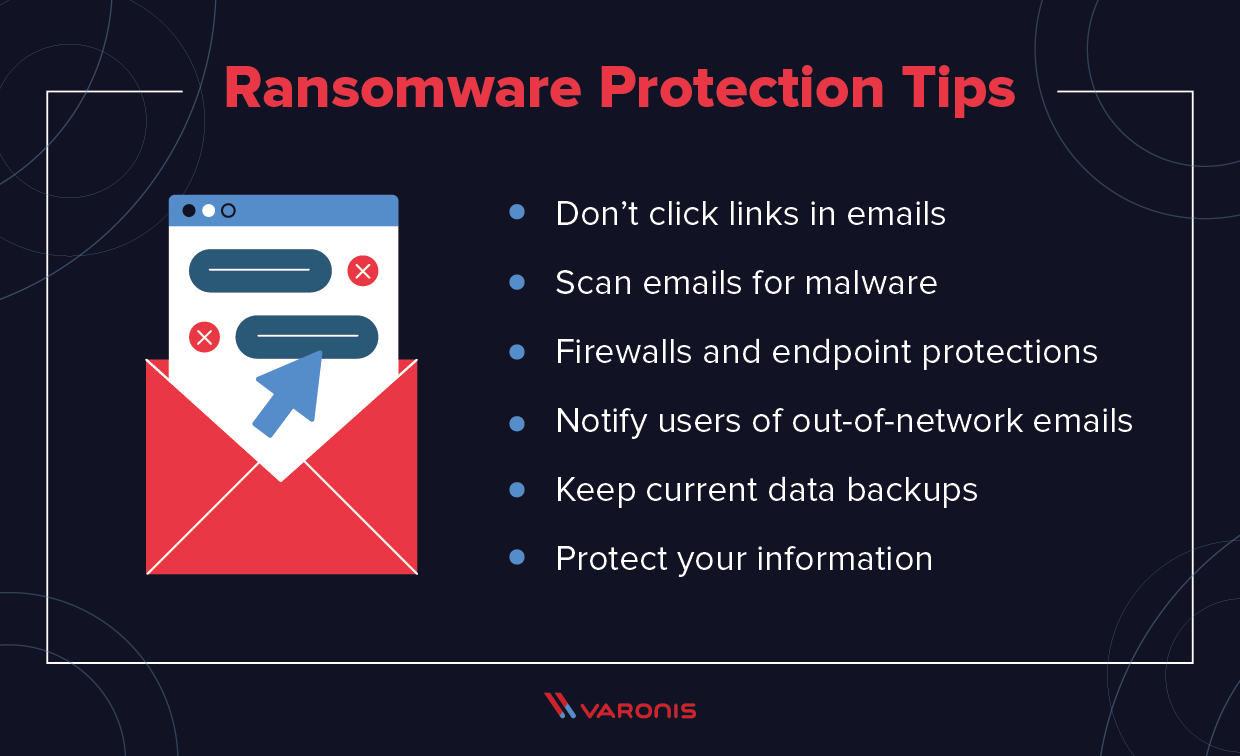My Device Against Ransomware?
Ransomware is a serious cybersecurity threat that can compromise the security of your device and data. To prevent infection and protect yourself against ransomware attacks, there are several key measures you can take:
1. Stay vigilant and avoid clicking on unsafe links: Be cautious when clicking on links in spam messages or on unknown websites. Clicking on malicious links can initiate automatic downloads that can infect your computer.
2. Keep your software up to date: Regularly update your operating system, antivirus software, and other applications. Software updates often include security patches that address vulnerabilities that could be exploited by ransomware.
3. Use strong and unique passwords: Create strong passwords for all your devices, online accounts, and applications. Avoid using common or easily guessable passwords, and consider using a password manager to securely store and manage your passwords.
4. Backup your data regularly: Regularly backup your important files and data to an external hard drive, cloud storage, or another secure location. This ensures that even if your files are encrypted by ransomware, you can restore them from a clean backup.
5. Enable automatic updates and security features: Enable automatic updates for your operating system and antivirus software. Also, make sure to activate built-in security features such as firewalls and real-time malware scanning.
6. Be cautious with email attachments: Exercise caution when opening email attachments, especially if they are from unfamiliar senders or contain unexpected file types. Malicious attachments are a common method for ransomware distribution.
7. Educate yourself and your employees: User education is crucial in preventing ransomware infections. Conduct regular training sessions to ensure that users are aware of best practices and potential threats, such as avoiding clicking on links from unknown sources.
8. Install reputable antivirus and anti-malware software: Use reputable antivirus and anti-malware software to regularly scan and protect your device from potential ransomware threats. Keep these software programs updated to ensure they can effectively detect and remove ransomware.
9. Use a firewall: Enable and configure a firewall to monitor and block unauthorized network traffic. Firewalls act as a barrier between your device and potential threats, including ransomware.
10. Be cautious when using public Wi-Fi: If you connect to public Wi-Fi networks, be aware that they may be insecure and potentially compromised by hackers. Avoid accessing sensitive information or downloading files when connected to public Wi-Fi.
These preventive measures can significantly reduce the risk of ransomware infections and help protect your device and data. By staying informed and adopting good security practices, you can minimize the chances of falling victim to ransomware attacks. However, it’s important to note that no preventive measures can guarantee complete protection, so it’s important to remain vigilant and regularly update your security measures.

How can ransomware attacks be prevented
Protection against ransomware – how to prevent an infection. Never click on unsafe links: Avoid clicking on links in spam messages or on unknown websites. If you click on malicious links, an automatic download could be started, which could lead to your computer being infected.
Cached
How is ransomware prevented or removed
User education is essential for preventing ransomware infection. Training sessions should be conducted periodically to ensure users are aware of important security measures, including: Avoid clicking on links from unknown or untrusted sources—including websites and emails.
What is ransomware and how do you protect
Ransomware is a type of malware which prevents you from accessing your device and the data stored on it, usually by encrypting your files. A criminal group will then demand a ransom in exchange for decryption. The computer itself may become locked, or the data on it might be encrypted, stolen or deleted.
Are ransomware attacks preventable
Ransomware is a significant security threat to any organization, but it's entirely preventable. Taking action to minimize the probability of infection and ensuring that clean backups are available for system restoration can dramatically decrease the cost associated with a ransomware attack.
What are the top 3 causes of successful ransomware attacks
Ransomware attack vectors and mitigations
The top three ways ransomware gets onto victims' systems are phishing, Remote Desktop Protocol (RDP) and credential abuse, and vulnerabilities.
Can ransomware be prevented
Effective ransomware prevention requires a combination of good monitoring applications, frequent file backups, anti-malware software, and user training. Although no cyber-defenses reduce risk completely, you can greatly limit the chance attackers will be successful.
Are ransomware attacks avoidable
Ransomware is a significant security threat to any organization, but it's entirely preventable. Taking action to minimize the probability of infection and ensuring that clean backups are available for system restoration can dramatically decrease the cost associated with a ransomware attack.
What is the most effective control against ransomware
How Can I Protect Against RansomwareIdentify assets that are searchable via online tools and take steps to reduce that exposure.Protecting Against Ransomware.Understanding Patches and Software Updates.Using Caution with Email Attachments.SMB Security Best Practices.Website Security.
What is the #1 cause of ransomware
Infection Vectors
The majority of ransomware is propagated through user-initiated actions such as clicking on a malicious link in a spam e-mail or visiting a malicious or compromised website.
Why is ransomware hard to prevent
Ransomware is an evolving threat—attackers are always searching for more advanced ways to carry out their plans. Cybercriminals utilize various attack vectors to distribute malware infections. That's why it's so hard for organizations to find single protection against ransomware attacks.
What is the biggest reason for successful ransomware attacks
Not only are ransomware operators getting better at developing, distributing, and hiding their malware, but the business victims also often make it easy for ransomware to succeed by failing to patch vulnerabilities or update software, by not creating reliable backups, by failing to apply least privilege principles, and …
Which is the best solution to prevent your important files from ransomware
Maintain backups – thoughtfully
The MS-ISAC recommends that backing up important data is the single most effective way of recovering from a ransomware infection.
